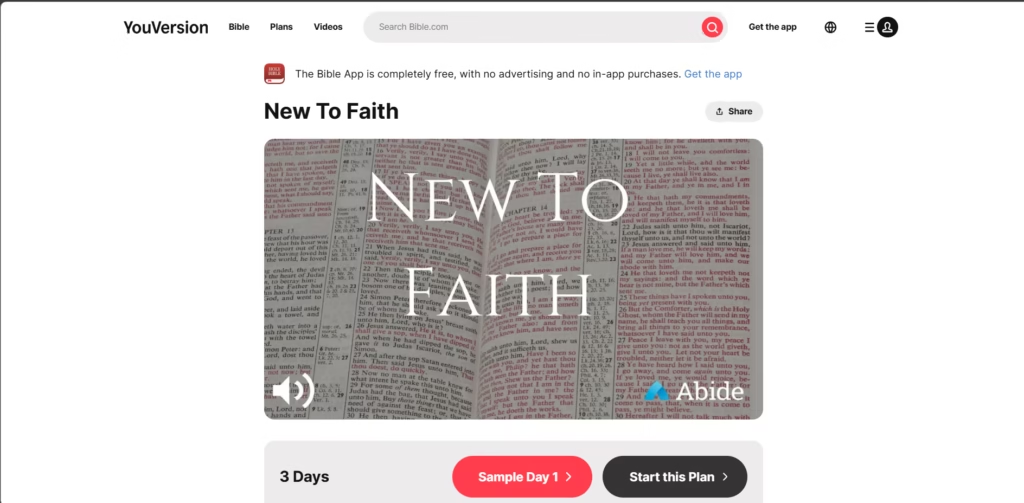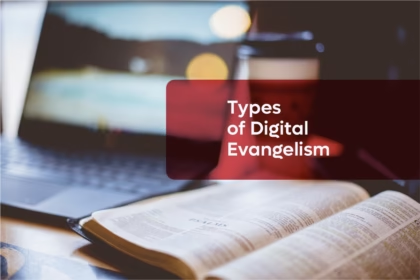We all know that to reach more people for Christ in today’s world, we must embrace digital evangelism. The digital space through social media, messaging apps, and online platforms offers us an incredible opportunity to share the love of Jesus faster and farther than ever before.
But let’s be honest: many believers still feel unsure, afraid, or simply unaware of how to start. That’s where this digital evangelism strategy comes in. It’s not just a guide; it’s an invitation to step out in faith and become a digital missionary right where you are.
This digital evangelism strategy was carefully designed for people just like you.
- If you’ve never shared your faith online, this is your moment to begin.
- If you’ve tried but need a better approach, this strategy will give you clarity and confidence.
I’ve personally done this, and I’ve seen firsthand how a simple gospel message online can lead to hope, healing, and even salvation. And we’ve seen others follow this same digital evangelism strategy and experience real testimonies—people giving their lives to Christ, receiving encouragement, or reconnecting with their faith all through meaningful digital conversations.
Digital evangelism doesn’t require a pulpit or a church stage. It starts with:
- A willing heart
- A praying spirit
- And a phone in your hand
Digital evangelism is how we light up the online world for Jesus. Download our Digital Evangelism Strategy Guide
So, if you’ve ever wondered, “Where do I start?” — this is it.
You’re not too late. You’re not unqualified. You’re just in time.
This is a guide for you. Let’s begin
Step 1: Prepare Your Heart and Tools
Before stepping into the mission field of digital evangelism, it is essential to prepare both spiritually and practically. Just as a farmer prepares the soil before planting, we must prepare our hearts and gather the right tools to sow the seed of the Gospel online.
1. A Willing and Ready Heart
Your heart is your most important tool in digital evangelism. Be available, teachable, and full of love. Ask yourself:
- Am I willing to represent Christ online with compassion and truth?
- Am I ready to listen more than I speak?
- Am I available to follow up, care, and build relationships?
The heart behind the message matters as much as the message itself. When your heart is full of God’s love, it will naturally overflow into your interactions.
2. Prayerful Lips and a Sensitive Spirit
Prayer is the engine of effective evangelism. Spend time in prayer before you begin, asking the Holy Spirit for:
- Wisdom in choosing who to reach out to.
- Sensitivity to people’s needs and emotional states.
- The right words to speak life and truth.
You can pray something like:
“Lord, use me today as Your vessel. Lead me to the person who needs Your love and hope. Fill my words with grace and truth. Amen.”
3. Essential Digital Evangelism Tools
To evangelize effectively online, make sure you have these basic tools:
- A Smartphone or Computer with a Stable Internet Connection: This ensures smooth communication without interruptions.
- Access to Social Media Platforms: Such as WhatsApp, Facebook, Instagram, Telegram, or even email—wherever people are, that’s where ministry happens.
- A Bible App or Online Bible Tool: The YouVersion Bible App is user-friendly, shareable, and includes Bible reading plans. It also allows you to share verses directly to social media or chat apps.
4. Create a Spirit-Led Digital Atmosphere
Before reaching out to anyone, take a few moments to:
- Pray for the person you plan to message even before they read your text.
- Ask the Holy Spirit for divine timing. Sometimes the exact moment you message someone is the very moment they need encouragement.
- Prepare your digital space: Have uplifting music, a Bible, and maybe a notepad nearby to jot down impressions or scriptures.
Pro Tip: Digital evangelism is not about performance—it’s about presence. Your consistency and authenticity online can open hearts over time. Begin each day with a fresh commitment to let Jesus shine through you.
Step 2: Start a Simple Conversation
Goal: Open the door for connection, not conversion—yet.
Evangelism starts with relationship. Before sharing the Gospel, you must first connect with the person as a fellow human being. The digital world gives us a natural avenue to do this, especially through messaging platforms and social media.
Pick a Friend to Reach Out To
Start with someone on your contact list who you know isn’t a believer or is likely far from the faith.
Choose one person from:
- Your WhatsApp contacts (excluding church or Christian groups)
- Your Facebook friends
- Your Instagram followers or connections
- Or even someone who recently followed or interacted with your content
Tip: It’s best to start with someone of the same gender, especially when you’re just beginning digital outreach. This ensures comfort and clarity in communication.
Send an Encouraging & Friendly Message
The goal here is not to preach, but to connect. Keep the tone casual, neutral, and warm. It’s okay not to mention Bible verses right away unless the Holy Spirit leads you. Avoid sounding “churchy” or overly spiritual at first—this stage is about building trust and a bridge for future conversations.
Sample Message:
“Hey [Name], I hope you’re doing well! I noticed you’re one of my contacts, and I just thought to say hi and connect with you a bit more here. How’s life treating you these days?”
If they respond, keep the conversation going naturally:
- Ask how their day or week is going.
- Share something light about your own day if appropriate.
- Let it feel like a normal chat—not a mission.
Focus on Relationship, Not Results
You’re planting seeds, not harvesting yet. Avoid jumping into spiritual talk unless the person opens up or the Holy Spirit clearly nudges you to. Keep things:
- Positive
- Light
- Encouraging
- Respectful
Pro Tip: People don’t care how much you know until they know how much you care. Focus on building real connection. If someone doesn’t respond, don’t take it personally—your kindness still planted a seed.
Step 3: Deepen the Conversation
Goal: Gently shift from casual connection to intentional spiritual engagement.
Once you’ve broken the ice with a warm introduction, it’s time to move the conversation a step deeper. This phase requires wisdom, sensitivity, and Spirit-led communication. You’re not preaching yet—but you’re slowly guiding the conversation toward purpose.
You can approach this in two major ways, depending on how the previous interaction went:
- A soft spiritual prompt (Evangelism Conversation Starters)
- A caring gesture (Offering Prayer)
Option 1: Digital Evangelism Conversation Starters
These are friendly, reflective, and non-intrusive questions that help uncover a person’s heart and open them up to spiritual conversations. Choose one based on how well the person is responding:
Digital Evangelism Conversation Starters:
- “Hey, what’s been giving you hope lately?”
- “What’s one thing you’ve been thinking deeply about recently?”
- “What do you turn to when life feels overwhelming?”
- “Have you ever had a moment where you felt God might be real?”
- “What’s your spiritual background, if you don’t mind me asking?”
- “Do you believe in prayer? I’ve found it really helps me stay grounded.”
How to Use:
Once they respond, engage sincerely. Don’t rush to “Jesus is the answer”—take time to listen, empathize, and ask thoughtful follow-up questions. Let their answers guide the pace and depth of your next move.
Example:
If they say, “Honestly, I’m just trying to stay positive,”
you could respond:
“That’s valid. Staying hopeful is so important. Personally, my faith has helped me find peace even when things don’t make sense. Can I ask what helps you keep going?”
You are guiding the dialogue gently toward Jesus, not forcing it.
Option 2: Offer Prayer
If you feel led to offer prayer or if the person mentioned a struggle or concern earlier, this is a powerful moment to serve and show love.
Message Option:
“I’d love to pray for you today. Is there anything specific you’d like me to pray about?”
If they respond with a request:
- Pray intentionally—type a heartfelt prayer or send a short, warm voice note.
- Keep it simple and personal. Include scripture if appropriate.
If they don’t respond with a request:
- Still pray. The Holy Spirit knows what they need.
- You can even reply with something like:
“Totally fine. I’ll just say a prayer for you anyway, trusting God knows what’s on your heart.”
Dedicate Time to Intercession
Whether they share a request or not, commit at least 15 minutes to pray for them.
- Lift up their name.
- Ask for divine encounters.
- Pray that their heart becomes open to the Gospel.
- Intercede for their salvation and healing (if needed).
Tip: Whether it’s through a deep question or a simple prayer, your goal is to open the heart gently. One seed can lead to transformation. Be patient and Spirit-led.
What’s Next?
If the conversation continues flowing well, you can begin to naturally introduce the reason you messaged them in the first place—to share Jesus. That’s what we’ll cover in the next phase.
Step 4: Share the Gospel
Goal: Present Jesus with clarity, love, and a personal touch.
By now, the relationship has been nurtured. Trust has been built. You’ve prayed for them, listened, and opened their heart to something deeper. Now is the time to lovingly and boldly share the message of salvation and extend the invitation to know Jesus personally.
1. Discuss the Need for a God-Centered Life
Start by gently shifting the conversation to spiritual purpose.
You can say something like:
“I’ve really enjoyed our conversations, and I’d love to share something that’s made a huge difference in my life…”
“To be honest, life can feel empty and confusing without God at the center. Knowing Jesus personally has given me peace, direction, and strength, especially in hard times.”
Keep it personal and relatable. Don’t give a sermon—share your story.
Let them know:
- We were created to have a relationship with God.
- Sin separates us from Him, but Jesus came to restore that relationship.
- Faith in Jesus brings peace, hope, forgiveness, and a new life.
- It’s not about religion—it’s about relationship.
Tip: Use simple language, and avoid “Christianese” terms that may confuse them.
2. Share the Gospel Message Simply
Here’s a simple Gospel outline you can adapt into your own words:
“God loves you deeply and created you for a purpose. But we’ve all made choices that separate us from Him—that’s what sin is. The good news is that Jesus came to bridge that gap. He lived a perfect life, died on the cross for our sins, and rose again to give us eternal life. When you believe in Him, ask for forgiveness, and invite Him into your heart—you’re made new.”
Ask a question like:
“Have you ever made a personal decision to follow Jesus?”
or
“Would you like to know how to start a relationship with God?”
If they say yes, you can lead them in a short salvation prayer.
3. Invite Them Into Community
After sharing the message of Christ, don’t leave them alone. Invite them into a supportive, loving Christian community.
Suggestions:
- “Would you be open to joining a local church near you?”
- “There’s a group I’m part of online where we talk about faith—want to check it out?”
- “I’d be happy to connect you with someone near your area if you’re interested in growing spiritually.”
This helps them move from conversation to connection.
4. Offer a Bible Plan for Growth
Whether they give their life to Christ or are still exploring, guide them toward growth using practical tools.
Invite them to read a Bible plan with you on the YouVersion Bible App:
- For New Converts: Starting Fresh Bible Plan
- For Growing Believers: Foundations of Faith Bible Plan

Say something like:
“I’d love to read a short Bible plan with you—it just takes a few minutes each day, and we can talk about what we learn.”
This helps them stay engaged and grow in understanding.
Tip: People are more likely to accept Christ when they see how it’s changed your life. Don’t just teach—testify. Share your personal experience and let your life be the proof of God’s goodness.
Step 5: Trust the Holy Spirit to Work
Goal: Release the outcome to God and remain faithful in love and prayer.
Digital evangelism is not a numbers game—it’s a heart mission. The role of a digital evangelist is to plant seeds, water them with prayer and love, and trust God to bring the increase. We are messengers; the Holy Spirit is the One who convicts, draws, and transforms hearts.
Let Go of the Pressure to “Get Results”
It’s not about how many people respond to your messages or say “yes” to Jesus immediately. Sometimes, the person you’re speaking to may not respond at all—or may not seem interested. Don’t let this discourage you.
Your job is to sow the seed faithfully.
God’s job is to ignite the heart.
Even if the only thing you do is send one message or pray silently for someone—you’ve already made an eternal investment.
Stand on the Word
“And when I am lifted up from the earth, I will draw everyone to myself.”
— John 12:32 (NLT)
When you lift up Jesus—in your words, your love, your prayers—the Holy Spirit begins a work in the person’s heart, even if you can’t see it right away. The draw may be slow, quiet, or even invisible at first—but God is always at work behind the scenes.
Keep Praying, Keep Loving, Keep Showing Up
Sometimes the greatest act of evangelism is consistency. People may not remember everything you say, but they will remember:
- Your genuine care.
- Your prayerful presence.
- The peace they felt when talking to you.
- The message of hope you shared, even briefly.
Continue praying for those you’ve reached out to.
Check in once in a while with a simple message of encouragement.
Let your digital life reflect Christ—consistently.
Final Tip: You are not alone in this mission. The Holy Spirit is your helper, your guide, and your co-laborer. Trust Him to complete the work you began in love.
Remember:
You may be just one step in someone’s journey to Christ. And that one step could be the turning point they never forget.
Challenges You May Face in Digital Evangelism—And How to Respond
PHASE 1: Preparing Your Heart and Tools
Challenge 1: Fear, Doubt, or Feeling Inadequate
- What It Looks Like: “What if I say the wrong thing?” “I’m not a preacher!” “Will they ignore me?”
- What to Do:
- Pray for boldness (see Acts 4:29).
- Remind yourself that God uses ordinary people to do extraordinary things.
- Remember: It’s not about perfection, but obedience.
Challenge 2: Technical or Tool Limitations
- What It Looks Like: Poor internet, no Bible app, or not knowing how to use digital platforms well.
- What to Do:
- Prepare ahead—download a Bible app, organize your contacts, and learn basic features of social media.
- Start small—master one platform at a time.
PHASE 2: Starting a Simple Conversation
Challenge 3: Rejection or No Response
- What It Looks Like: Being ignored or left on “read.”
- What to Do:
- Don’t take it personally. Rejection of the message is not rejection of you.
- Keep praying for them. Someone else may come and water the seed you’ve planted.
Challenge 4: Awkwardness or Overthinking
- What It Looks Like: Not knowing how to phrase the first message or feeling uncomfortable.
- What to Do:
- Write the message in a natural, friendly tone.
- Practice beforehand or use message templates.
- Keep it simple. Authenticity is more important than eloquence.
PHASE 3: Deepening the Conversation
Challenge 5: The Conversation Feels Stuck
- What It Looks Like: The person gives short replies or changes the subject.
- What to Do:
- Don’t force spiritual topics. Keep loving and checking in occasionally.
- Ask open-ended, thoughtful questions that invite dialogue.
- Sometimes silence means the person is thinking—be patient.
Challenge 6: You Feel Spiritually Dry or Uninspired
- What It Looks Like: Struggling to stay motivated or prayerful.
- What to Do:
- Feed your spirit with worship, scripture, and fellowship.
- Don’t isolate yourself—share your journey with other believers.
PHASE 4: Sharing the Gospel
Challenge 7: Fear of Offending
- What It Looks Like: Worrying that bringing up Jesus may push someone away.
- What to Do:
- Speak the truth in love (Ephesians 4:15).
- Respect boundaries but stay Spirit-led.
- Remember, eternity is more important than comfort.
Challenge 8: Questions You Can’t Answer
- What It Looks Like: They ask deep or theological questions and you feel unqualified.
- What to Do:
- Be honest: “That’s a great question—I don’t know, but I’ll find out.”
- Let it open a door to deeper conversation or bring in someone more experienced.
PHASE 5: Trusting the Holy Spirit
Challenge 9: No Immediate Results
- What It Looks Like: You shared the Gospel, but they didn’t respond or believe.
- What to Do:
- Release the outcome—you planted a seed!
- Keep them in prayer. God is still working behind the scenes.
- Celebrate obedience, not just results.
Challenge 10: Spiritual Warfare or Discouragement
- What It Looks Like: Feeling drained, distracted, or suddenly attacked in other areas of life.
- What to Do:
- Cover yourself in prayer and the Word (Ephesians 6:10–18).
- Ask others to intercede for you.
- Stay connected to a spiritual community for strength.
Final Encouragement:
“So neither the one who plants nor the one who waters is anything, but only God, who makes things grow.”
— 1 Corinthians 3:7 (NIV)
Digital evangelism is seed sowing. Some conversations may bloom instantly. Others may take years. But none of it is wasted. Every word spoken in love carries eternal potential.






